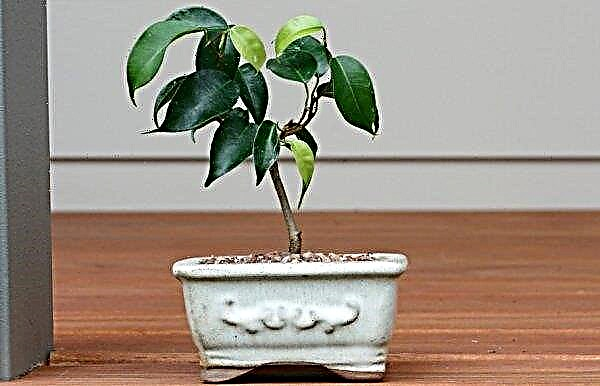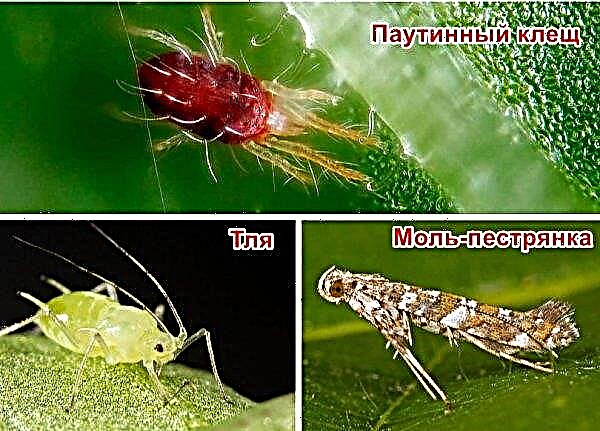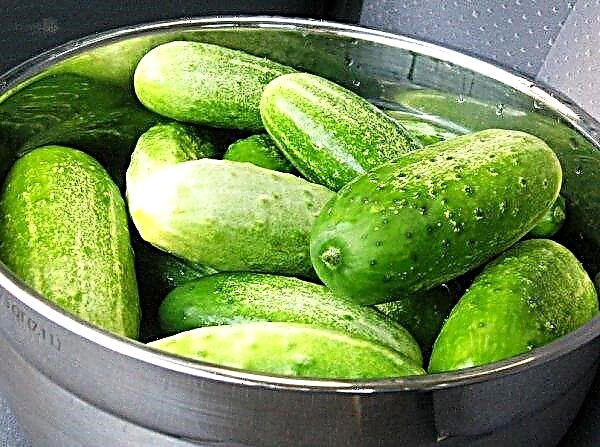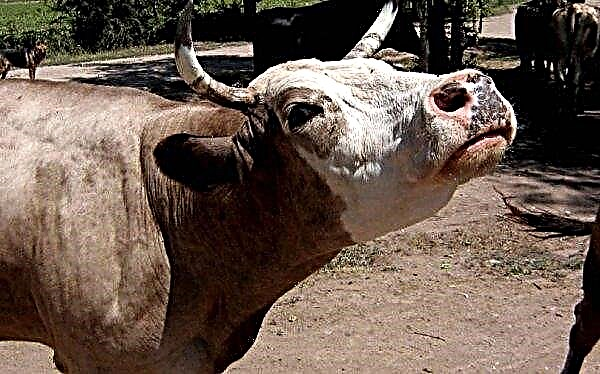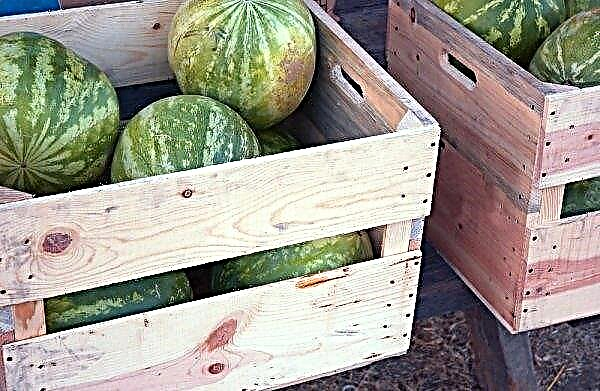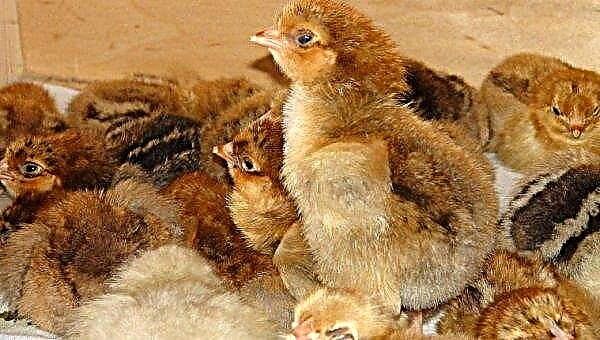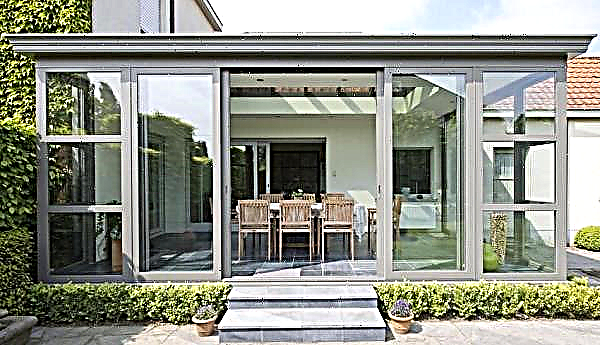Any rabbit cage must meet a number of requirements, but the first thing you should pay attention to is the strength and ease of construction. Not the last role in obtaining the desired result is played by the choice of the grid for the doors, windows and floor of the future rabbit house, although if you wish you can make the whole cage from such material.
Varieties of cell nets
Given the ability of rabbits to gnaw even thick rods, it is easy to guess that plastic or wooden nets are not suitable for the construction of rabbitry. There are a lot of metal structures in the modern market. All of them have their own characteristics and characteristics, and in order not to be mistaken in their choice, We recommend that you consider some of the most popular options:
- Chain link. A relatively cheap solution for a rabbit cage, which is perfect for creating walls and ceilings. It is rarely used for sex, as heavy rabbits will be uncomfortable on such a surface (easily bending), and in some cases they may even develop subdermatitis.

- All-metal mesh. When using it, it is worth focusing on the same nuances as in the first case. Moreover, there are barbs near each hole in the material that can severely injure the paws of animals if used to organize the floor. To solve the problem, remove all protruding areas with a file before assembling the structure. Otherwise, a product made of such a material is characterized by high strength and durability.

- Welded galvanized mesh. This option is considered the most suitable for the construction of a rabbit cage, for which there are several logical explanations:
- durability (the teeth of rabbits are not afraid of the canvas and corrosion practically does not take it);
- durability (withstands even the heaviest animals);
- excellent light transmission (a thin wire ensures that a sufficient amount of sunlight gets inside, which is very important for the harmonious development of rabbits and strengthen their immunity);
- ease of cleaning the cell (this cloth responds well to detergents, which means that abrasive substances will not affect the integrity of the cell and it can be washed well).
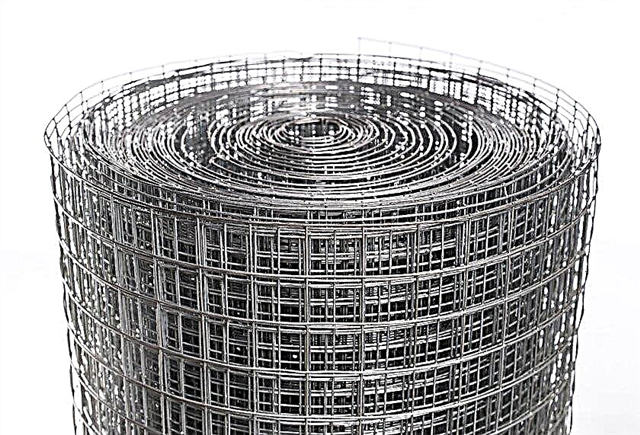
Did you know? Female rabbits spend no more than 5 minutes a day on feeding their cubs.
Basic grid selection rules
Before proceeding to the choice of material, it is necessary to decide what and how you will do from the acquired mesh, therefore, before buying, it is important to consider the following features:
- the required mesh size (on the door and floor it will take less mesh than the whole cell, which means you can choose more expensive products);
- the size of the cells in the grid (this indicator is more dependent on the breed of the animal, because if large individuals can easily fit on the bottom with 2 × 3 cm cells, then for young animals or representatives of medium breeds this surface will be inconvenient: when moving inside the cage, the animal’s legs fall down) ;
- when combining a mesh floor with a coating of inclined plywood (connected by joining), it is advisable to choose a mesh with cells no more than 25 by 25 mm, and if metal materials are used in the construction of the cell, then the mesh size can be larger: 2 × 3 cm;
- the strength of the "door" or "window" mesh does not play a big role, so you can buy ordinary netting;
- in the construction of internal rabbit cages, a welded metal mesh with cells of 2.7 × 2.7 cm, 2.7 × 5.4 cm, 2.7 × 7.5 cm will be more appropriate for the floor;
- the thickness of the wire should not be less than 13-15 mm, and an ideal option for the bottom of the cage is a wire with a thickness of 20 mm (it will not cut into the paws of rabbits).
 When buying a selected product, also do not forget to pay attention to the quality of its manufacture. The grid should not be a curve, with clearly visible delamination at the weld points and thin rods in separate areas. Any such violations during the production process reduce the strength of rabbitry made later, which in turn threatens animal injuries.
When buying a selected product, also do not forget to pay attention to the quality of its manufacture. The grid should not be a curve, with clearly visible delamination at the weld points and thin rods in separate areas. Any such violations during the production process reduce the strength of rabbitry made later, which in turn threatens animal injuries.How to make a grid cell
For the constant keeping of rabbits, it is worth choosing durable and well-resistant cages, possibly made of wood. However, there are cases when bulky structures simply do not fit in a limited area, so more compact products have to be used to accommodate animals. The latter also includes a galvanized mesh cage, which is easy to assemble.
Size calculation
For 1 large or 2 medium rabbits, a cage of 50 × 60 × 100 cm will be sufficient, for the manufacture of which a galvanized rolled mesh with cells of 2.5 × 2.5 cm and a rod thickness of 1.8 mm is perfect. If several feeders or a place for some additional equipment is provided inside the cage, then the dimensions can be increased.
Materials and tools for work
The main material for creating the cage according to the plan described below will be a galvanized roll mesh, 100 cm wide. From a whole sheet you need to cut:
- 1 part 220 × 100 cm;
- 2 parts 50 × 60 cm;
- 1 part 50 × 50 cm.

Also, when doing the work, you will need:
- construction clipper with staples;
- Bulgarian;
- two wooden blocks 70 cm long;
- iron reinforcement with a diameter of 12 mm and a length of 120 cm (2 pieces)
- knitting wire;
- nippers;
- roulette;
- saw on wood;
- plastic clamps;
- board, 1 m long
Important! The clipper can be replaced with ordinary pieces of wire (of the same knitting), but the strength of such a structure is difficult to guarantee: individual parts of the mesh can move out and the shape will be broken.
Production Phase
The manufacturing process of a metal cage consists of a series of sequential actions, starting from the preparatory stage and ending with the installation of the finished structure on the supports. In this case, the work plan looks like this:
- Roll out the net on the floor and, having made the appropriate marks, cut the first and largest rectangular part with a grinder: 120 × 100 cm. Following it, the same principle also needs to cut smaller pieces, which later become sidewalls and the door of the cage.
- The protruding parts of the cells remaining after the cut should also be cut off with a grinder so that the edges of all segments are absolutely even and do not cling during installation.
- Now, take the largest segment and, spreading it on the floor (vertically), step back from the top edge of 60 cm.
- Along the width of the segment, press the grid with the board in the right place, and then begin to bend the remaining part behind it, 60 cm in size (as a result, a right angle should form with the part of the grid sticking up).
- From the place of the first bend, back off another 50 cm and bend the mesh again using the board and your own efforts.
- Having retreated another 60 cm from the second bend, repeat the indicated action to get a box with one loose part.
- To make the mesh even more stable, fasten the free parts with a clipper, threading the brackets every two cells.
- Next, align the bends (the sides should become flat, not convex) and using the same clipper, attach the missing side parts, walking the tool along all their faces (you should get a closed mesh box).
- Position the structure in front of you so that the seam connecting the edges of the grid is at the top.
- Using a grinder, cut a hole in the front wall (height 50 cm), departing from the bottom edge of 5 cm. The width of the opening for the previously prepared door should be 45 cm so that the grid of different parts is slightly facing each other on each side.
- Using the same clipper, attach one side of the door to the cage in height so that it can open and close freely.
- On the opposite side at the top and bottom, fasten two hooks of knitting wire that will hold your door in the closed position (bending them into a loop, you need to wind the free ends on the edge of the door, and the resulting curved nose will cling to the cell on the cage itself).
- To create supports, take two pieces of reinforcement and, turning the product upside down, lay them along the length of the structure, departing from the edge by 10 cm on each side. If you measured everything correctly, then the ends of the iron rods will protrude beyond the edges of the cage by about 10 cm on both sides.
- To fix the fittings, plastic clamps will help, which must be used every 3-4 cells of the cage floor.
- Now, turn the cage over and install it on the prepared wooden bars, resting the ends of the reinforcement in them, and so that the structure does not move, the joints can be additionally fixed with screws.
Video: making a rabbit cage
On this cell can be considered ready, but you only have to:
- set the drinker inside;
- cover part of the floor with plywood (increase the comfort of animals);
- place feeders.
Arrangement and care of the cage
Not all mesh structures are equally convenient for the animals themselves, therefore, to increase their comfort, it is necessary to properly equip the inner space of the mesh dwelling. Special attention should be paid to the floor, feeding troughs and drinking bowls, which must be fixed so that the animals cannot spill or spill anything.
Important! All connecting manipulations with a wire or clamps must be performed only crosswise, “linking” the corners of the lower and upper cells. If you fasten the neighboring sides, then such a connection will constantly move and shift, then in one direction, then in the other direction.
Floor and bedding
Most often, soft hay is used as bedding material, since it is much easier to remove it from the cage than sawdust or paper, which is generally not suitable for coarse mesh. If possible, you can purchase a corn filler (particles of corn cobs) or lay straw in a cage, but in this case you will have to use some kind of base so that the filler does not fall into the openings of the cage. A section of plywood processed with slaked lime will help increase the comfort of the eared. It is not necessary to cover the entire floor with it, it is enough to place a sheet on only one side of the cage so that the animals can rest on a flat surface. On top of the plywood you can put a litter of hay.
A section of plywood processed with slaked lime will help increase the comfort of the eared. It is not necessary to cover the entire floor with it, it is enough to place a sheet on only one side of the cage so that the animals can rest on a flat surface. On top of the plywood you can put a litter of hay.
Did you know? The smallest rabbit in the world is considered a pygmy rabbit, aydahsky. The length of his body is 25–29 cm, and the weight of an adult often reaches only 250 g.
Feeding troughs and drinking bowls
Mesh walls allow you to conveniently fix drinking bowls and feeders at any height, depending on the size and growth of the animal itself. However, when choosing these products, it is important to take into account the rabbitry parameters and its shape. You can buy floor bowls for food, but in this case, make sure that they have a wide bottom, otherwise the animals will easily turn the dish over and will constantly sprinkle the food.
It is advisable to pick up drinking bowls with a special spout that will not allow water to be shed (sold at pet stores), especially since special fasteners are included in the kit to quickly fix the bottle on the cage wall.
Pay special attention to the place for placing hay. The holder for it should be fixed as low as possible, since rabbits do not like to raise their heads up. For decorative animals, in addition to these products, toys can be attached to the cage, for example, in the form of wooden balls or other figures made of natural material.
In large cages, elevations and ledges can be arranged, which animals can climb onto with the help of small stairs located nearby. The main thing here is to prevent a possible fall of the eared speaker, having previously considered all the features of the installation.
Mesh cages are not suitable for street keeping animals, so when constructing such a dwelling, take care of the presence of an enclosed space without drafts. In winter, rabbits will have to organize additional heating using special lamps or other similar equipment.Important! Each element in the rabbit house must be well fixed so that the animal could not move it or break it. For fastening, it is advisable to use only self-tapping screws with a flat cap, screwing them all the way to avoid injuries.
Disinfection and cleaning
Galvanized mesh cages are not afraid of moisture and abrasive components of detergents, so when cleaning rabbitry, you can safely wipe the rods with a damp or even wet rag soaked in a disinfectant solution in advance. For the good health of the rabbits, the cells need to be washed at least 1 time in several weeks, having previously moved their inhabitants to another place.
Change of litter and cleaning of feeders is carried out a little more often - once a week, although in this matter a lot depends on the number of rabbits contained inside. It is advisable to wash the drinkers daily, before filling with fresh water.
The following products can be used to disinfect rabbitry:
- Virocid
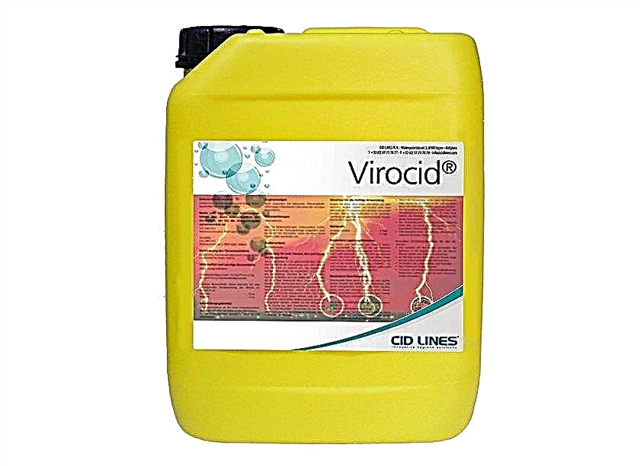
- Fly ash

- Alcohol solution of iodine

- Glutex

- Formalin

- Virosan.
Features of keeping rabbits in a mesh cage
Mesh cages for rabbits are not the best option for long-term keeping of animals in an open area, but at the same time they are very practical and easy to clean. To increase the comfort of their residents, be sure to take care of a suitable bedding layer, and place the cells themselves in a room closed from drafts. In extreme cases, it is worth covering several sides with windproof material, especially on the windy side. Feed and hay should be placed only in the feeders, otherwise they will quickly find themselves on the floor, and the consumption of the feed mixture will increase. Otherwise, caring for rabbits in "mesh houses" is no different from their content in other types of cells.
In extreme cases, it is worth covering several sides with windproof material, especially on the windy side. Feed and hay should be placed only in the feeders, otherwise they will quickly find themselves on the floor, and the consumption of the feed mixture will increase. Otherwise, caring for rabbits in "mesh houses" is no different from their content in other types of cells.









